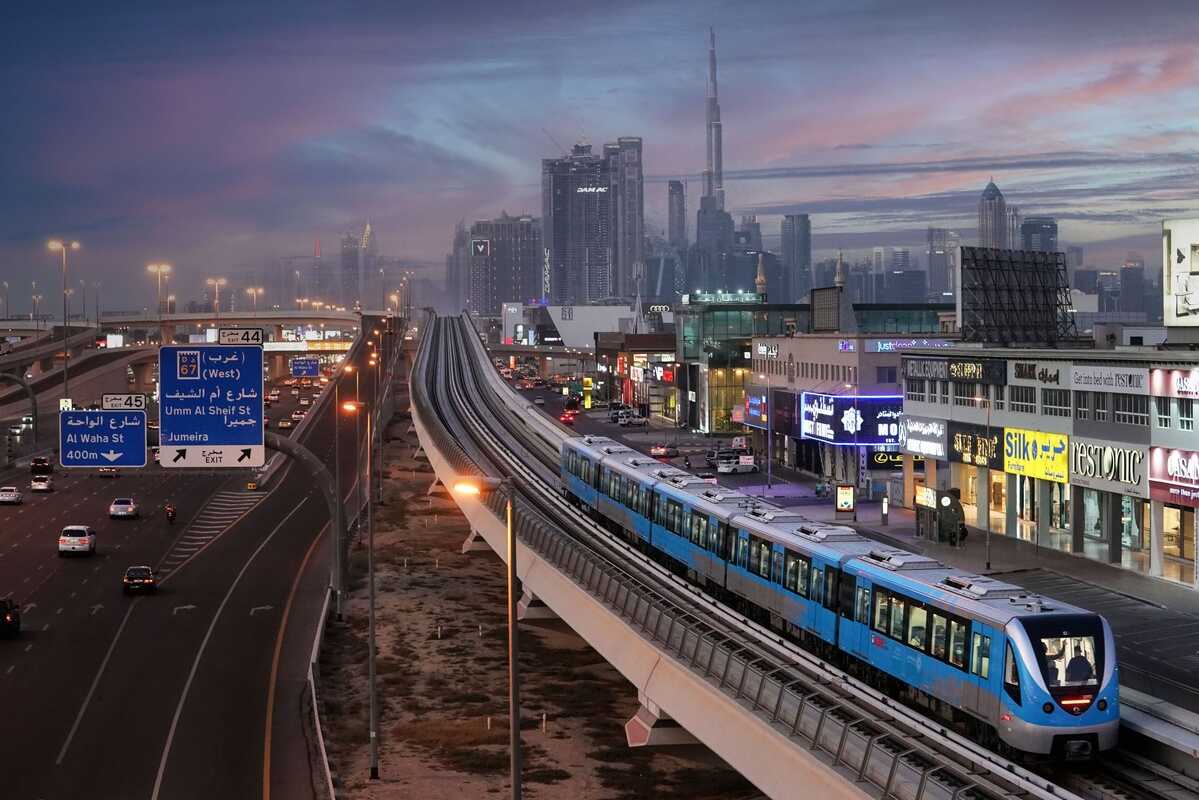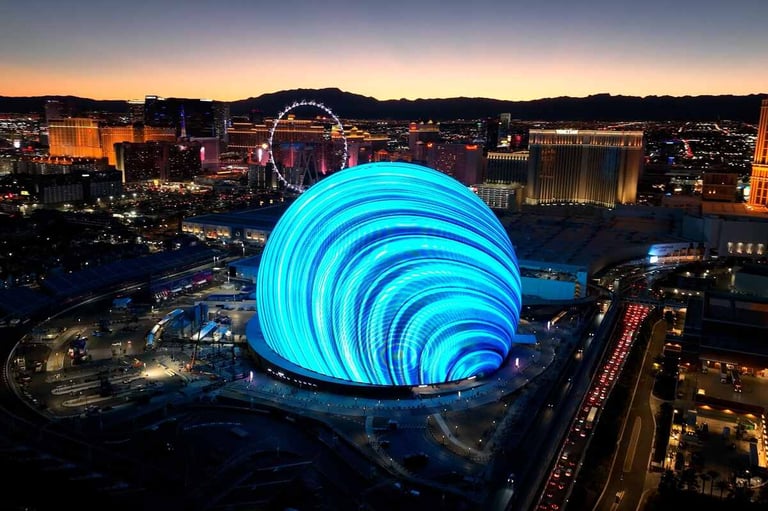Dubai Metro is celebrating its 15th anniversary today, marking a pivotal moment in its mission to revolutionize urban transit in the city. As a testament to Dubai’s culture of innovation and excellence, the metro has evolved into a crucial artery, linking essential areas throughout Dubai and offering dependable, eco-friendly transport for both residents and visitors. Since its inauguration on September 9, 2009, the metro has expanded to meet the demands of the city’s rapid growth, significantly contributing to its development as a global business and tourism hub and reinforcing its image as a forward-looking metropolis.
Over the past 15 years, Dubai Metro has witnessed a steady increase in ridership, totaling approximately 2.4 billion passengers. It has played a key role in accommodating the rising population and urban sprawl, achieving impressive results in operational efficiency, punctuality, and compliance with the highest international safety standards.
15 عاماً مرت منذ افتتاح مترو دبي .. نقل خلالها 2.4 مليار مسافر في أكثر من 4.3 ملايين رحلة.. ونسبة الالتزام بمواعيد رحلاته بلغت 99.7% … ونريدها 100% يإذن الله ..
الالتزام بالمواعيد ثقافة .. وفضيلة .. وقيمة حضارية نبيلة ..
مشروع مترو دبي .. يمثل ثقافة دبي .. القائمة على الجودة…
— HH Sheikh Mohammed (@HHShkMohd) September 8, 2024
Dubai Ruler Sheikh Mohammed bin Rashid Al Maktoum highlighted on his X account that Dubai is striving for a 100 percent punctuality rate.
The Vice President and Prime Minister of the UAE noted that 15 years have passed since the Dubai Metro began operations, during which it has transported 2.4 billion passengers across 4.3 million trips, achieving an impressive punctuality rate of 99.7 percent. He expressed the aspiration for the metro to reach 100 percent punctuality.
Sheikh Mohammed further remarked that punctuality is not just a cultural aspect but a virtue integral to their values. He noted that the Dubai Metro exemplifies the city’s commitment to quality, punctuality, and fostering the ideal environment for living and working on a global level. He also expressed gratitude to all the Dubai Metro staff for upholding these principles.

Daily operations and efficiency
Currently, the metro serves around 730,000 passengers daily, making it the preferred transportation choice for many. With a remarkable punctuality rate of 99.7 percent, it consistently exceeds expectations while maintaining stringent safety and operational standards. Since its launch, Dubai Metro has facilitated a staggering 4.3 million journeys, covering a distance of 26.8 million kilometers, the Government of Dubai Media Office reported.
Global recognition and safety standards
Mattar Al Tayer, director general and chairman of the Board of Executive Directors of the Roads and Transport Authority (RTA), noted that since its inauguration on September 9, 2009, the Dubai Metro has consistently achieved success. He highlighted the significant expansion of the metro network, which has seen the length of lines increase from 52 kilometers to 90 kilometers, the number of stations grow from 10 to 53, and the operating trains rise from 79 to 129. Daily ridership has also surged, increasing from 20,000 on September 10, 2009, to 767,000 on September 3, 2024. On peak days, such as New Year’s Eve and major holidays, the metro has accommodated as many as 900,000 riders in a single day.
Additionally, he mentioned that the Dubai Metro has created job opportunities for Emirati nationals, currently employing 228 citizens through the metro’s operating company. He emphasized that it has retained its status as the world’s longest driverless metro project and remains a landmark initiative of the Roads and Transport Authority in Dubai, forming the foundation of the emirate’s public transport system. The metro maintains its esteemed global reputation for safety by implementing environmentally friendly and efficient solutions, promoting green economy principles, and ensuring operational efficiency and punctuality in its service schedules, Al Tayer noted.
Milestones in ridership
The growth trajectory of ridership has been remarkable since the service began. From its opening in September 2009 until the end of that year, the number of riders surged from 6.089 million to 38.089 million in 2010, further rising to 69.001 million in 2011. The following year saw a significant leap to 109.049 million, with ridership reaching 137.076 million in 2013 and 164.031 million in 2014. In 2015, the total climbed to 178.065 million, and by 2016, it had reached 191.033 million. The metro surpassed 200 million riders in 2017, recording 200.075 million, while 2018 marked the highest passenger numbers to date at 204.041 million. In 2019, ridership was 202.098 million.
Resilience during challenges
Despite the challenges posed by the COVID-19 pandemic in 2020, Dubai Metro still managed to transport 113.063 million passengers. This figure rose to 151.026 million in 2021, and in 2022, the metro achieved a record of 225.142 million riders. The upward trend continued in 2023, with ridership reaching 260.034 million, and from January to August of this year, the total stood at 175.46 million.
Expansion projects and future plans
On June 29, 2016, Sheikh Mohammed bin Rashid Al Maktoum approved the contract for the Route 2020 project, which extends the Dubai Metro’s Red Line from Jebel Ali Station to the Expo 2020 site. Valued at AED10.6 billion, the contract was granted to the Expo Link Consortium, comprising companies from France, Spain, and Türkiye. On September 5 of that same year, His Highness Sheikh Hamdan bin Mohammed bin Rashid Al Maktoum ceremonially laid the foundation stone for the Route 2020 project, marking the beginning of construction. Officially launched on July 8, 2020, Route 2020 spans 15 kilometers (11.8 kilometers above ground and 3.2 kilometers underground) and connects seven stations, including one interchange station with the Red Line and a station at the Expo site. This line connects several densely populated areas. These include The Gardens, Discovery Gardens, Al Furjan, Jumeirah Golf Estates, and Dubai Investment Park. Together, these areas house over 270,000 residents. The journey from Dubai Marina to Expo Metro Station takes around 16 minutes, with a capacity of 46,000 riders per hour in both directions.

Enhancing connectivity with the Blue Line
Continuing its commitment to enhancing public transport, on November 23, 2023, Sheikh Mohammed bin Rashid Al Maktoum approved the route for the Dubai Metro Blue Line, which will extend 30 kilometers and connect 14 stations. This line aims to serve key areas projected to house about one million residents, in line with the Dubai 2040 Urban Master Plan.
The Blue Line represents the fifth strategic project in the public transport portfolio, following the Red and Green Lines of the Dubai Metro, the Dubai Tram, and Route 2020. It stands as one of the largest strategic initiatives in the public transport sector, contributing to Dubai’s Economic Agenda D33 and the goals of the Dubai Urban Plan 2040, which seeks to make Dubai the best city to live in globally while enhancing its competitiveness as an appealing destination for international events. The Blue Line will improve connectivity and integration with the Red and Green Lines of the Dubai Metro, providing direct access between Dubai International Airport and nine major locations along its path, with expected travel times ranging from 10 to 25 minutes.
For more news on logistics, click here.








